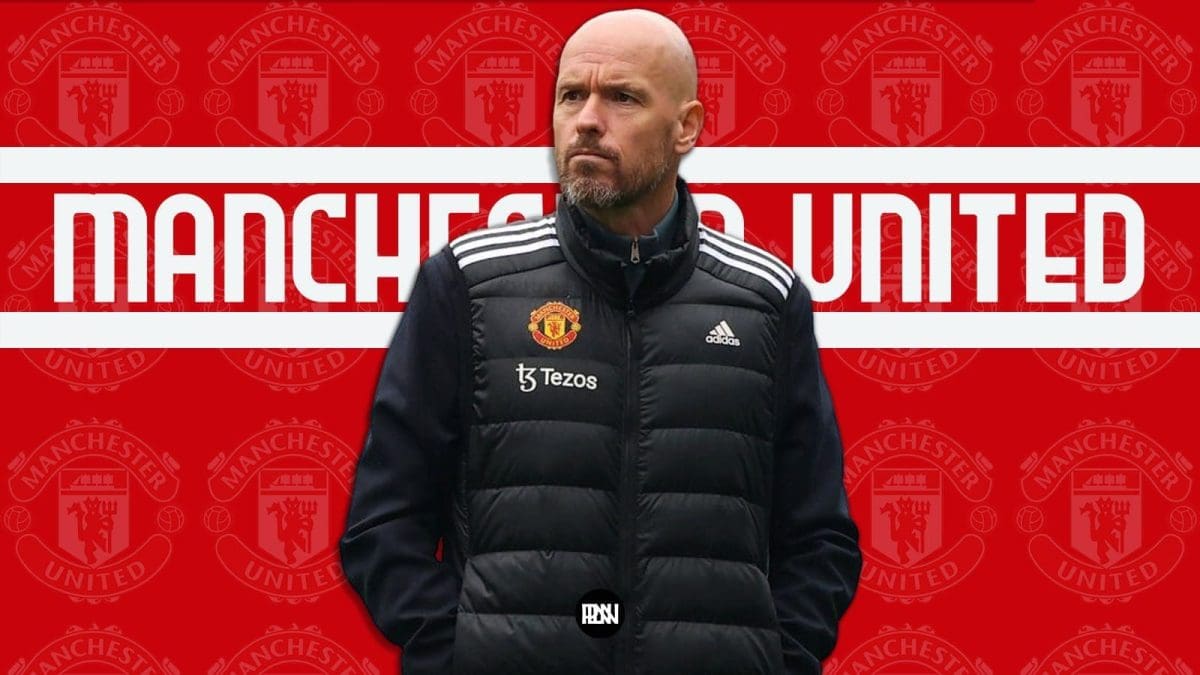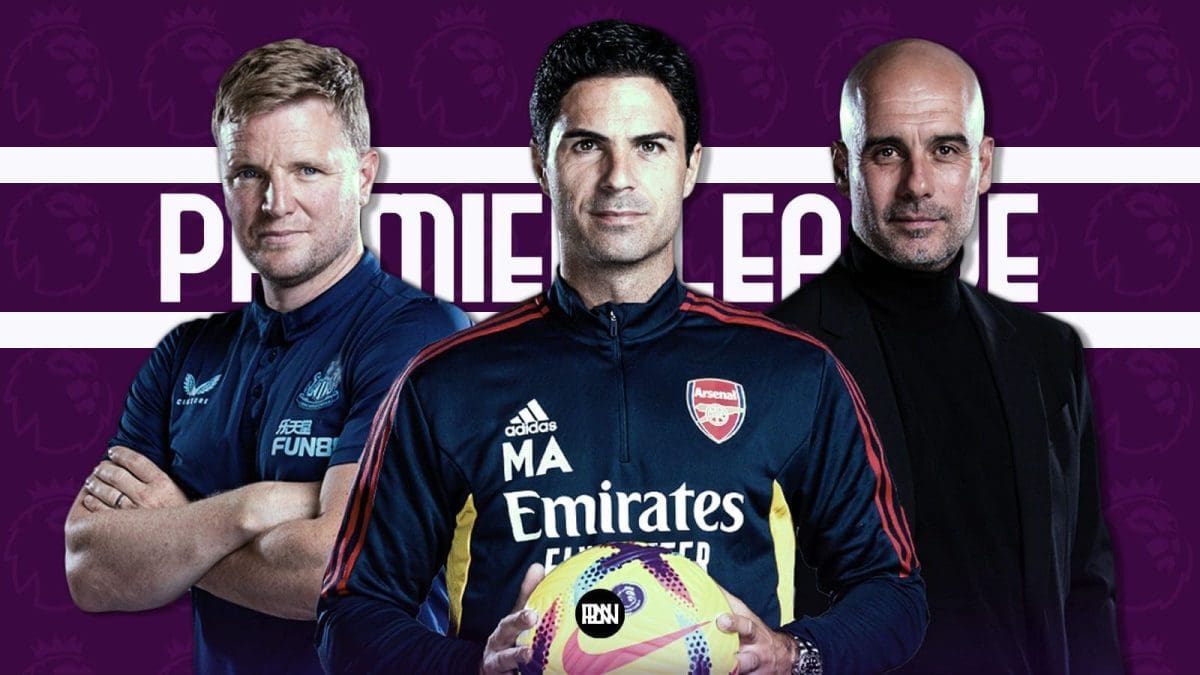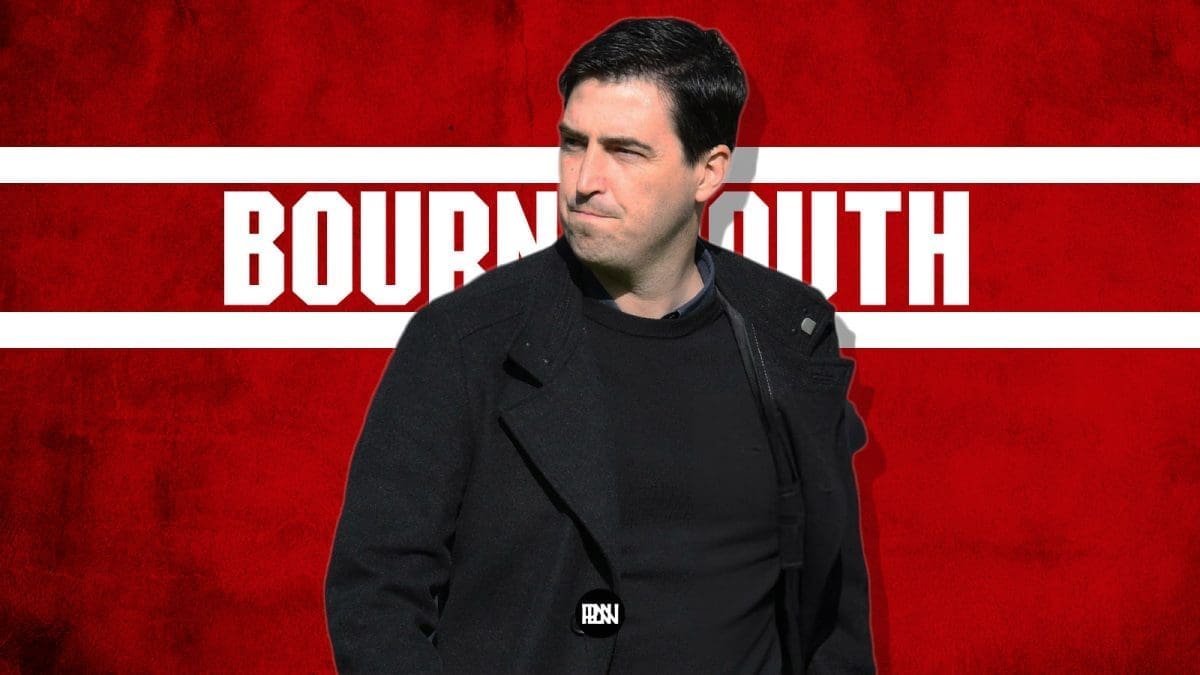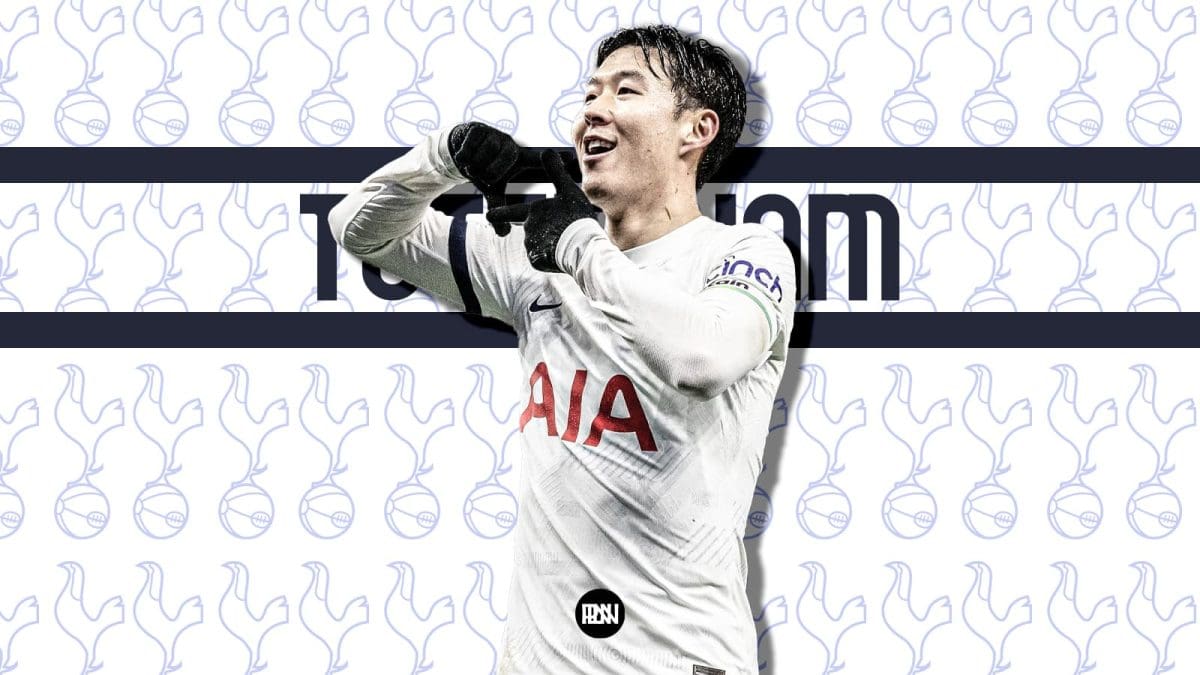When Pep Guardiola spoke about Hwang Hee-Chan referencing him as the “Korean guy” in the press conference leading to the game between Manchester City and Wolves, all eyes were on him as to whether he would make a statement on the field. In the 66th minute of the game, Hwang rose to the occasion to score what would be the winner to end Man City’s dominant run and keep Wolves secure and far from the relegation places for the foreseeable future.
Hwang’s career journey or his own development as a player wasn’t always linear. Still, his perseverance to prove with Wolves even after the difficulties surrounding the club regularly has meant he’s now the senior most attacking player amongst Wolves rank and by forming a crucial partnership between himself, Matheus Cunha and Pedro Neto, leading the team as their top scorer, Hwang’s finally come to fore in his own way. We look at how his season so far under Gary O’Neil has shaped.
Hwang Hee-Chan’s (황희찬) role in Wolves system: How Gary O’Neil’s dynamics helped him discover his best form
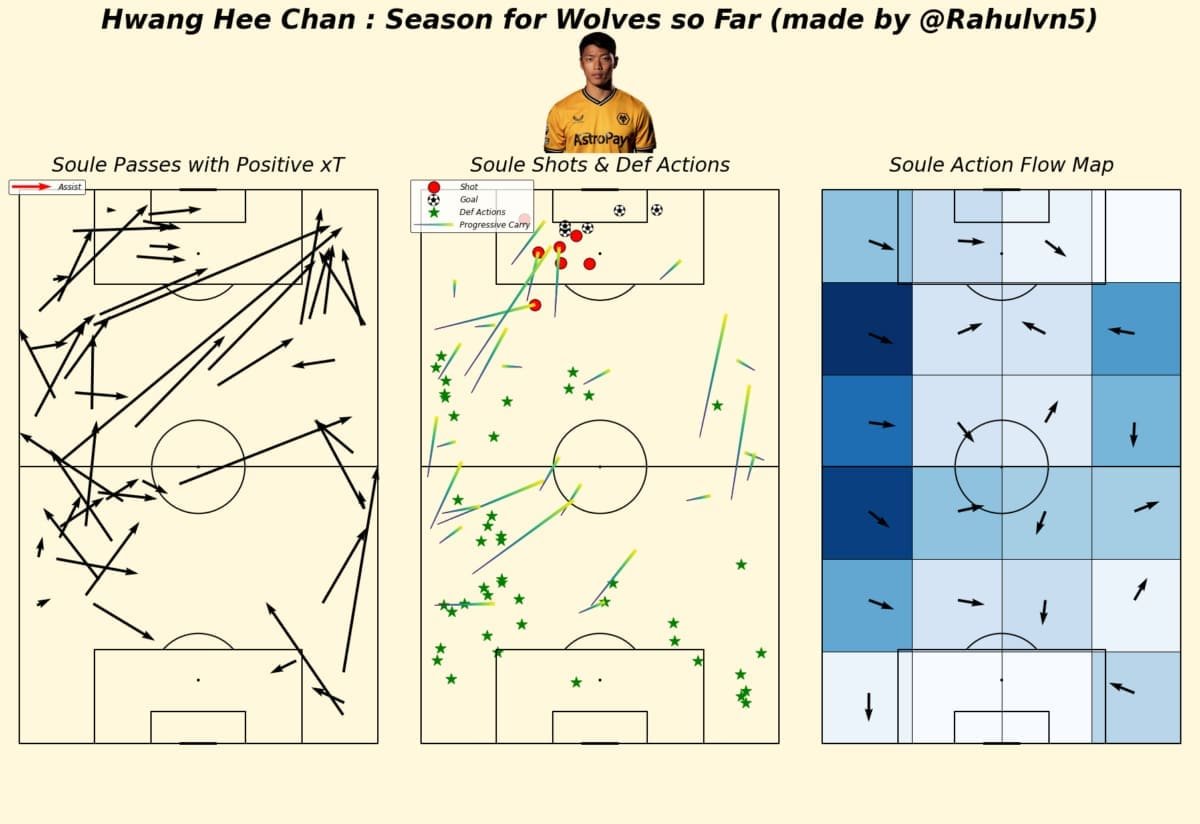
Hwang’s role as an inside forward in O Neil’s system has certainly brought out an instinctive finisher out of him. When we look at Pic 1, we see that Hwang primarily operates on the left flank, receiving in the wide channels more often than not but what has brought the goals in him would be the freedom he has with the movements of players around him especially someone like Matheus Cunha.
With the maximum amount of shots inside the box and the goals closer to the box, this encapsulates Hwang Hee-Chan’s role as the box forward that has him and Neto alongside Cunha create a proper dynamic.
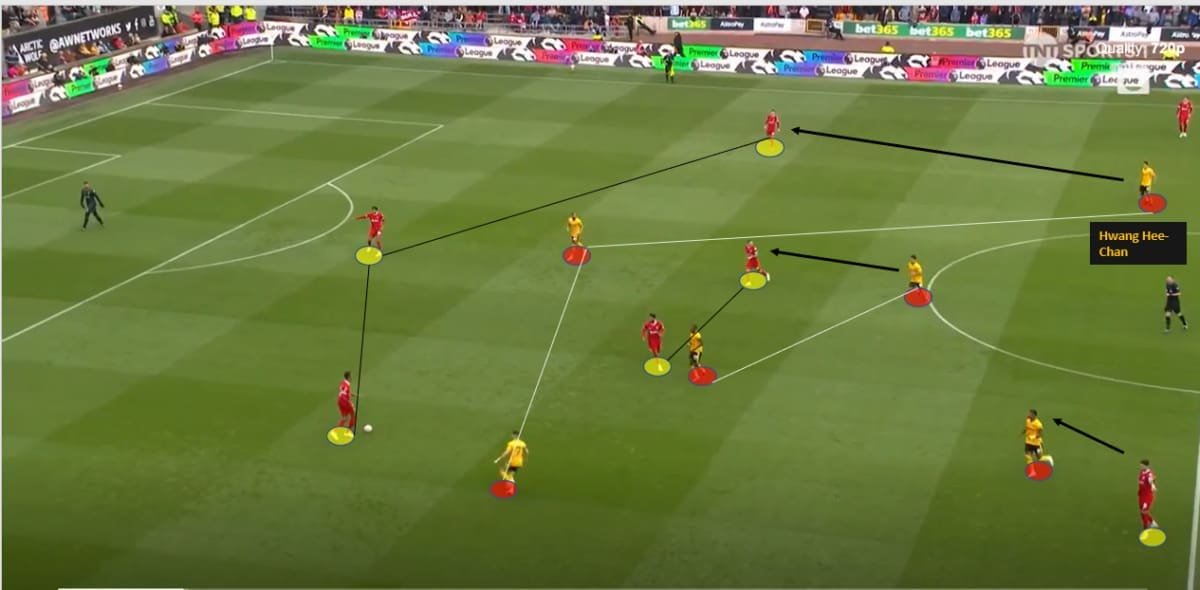
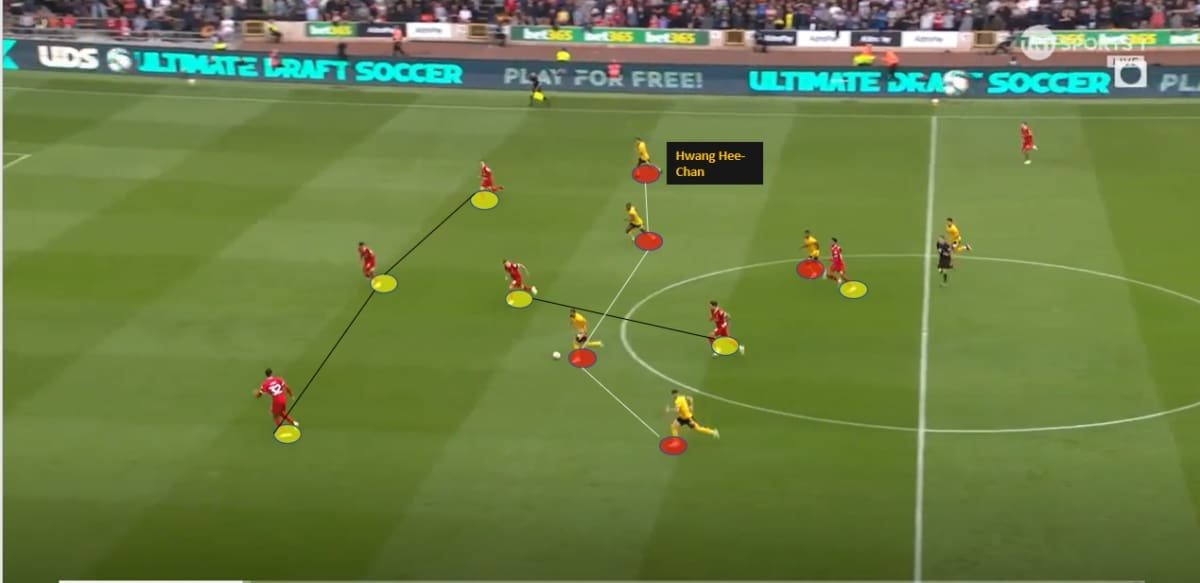
Pic 2, 3 and Vid 1: Hwang’s role on the right wing and the sequence leading to his goal against Liverpool.
Hwang’s role against Liverpool displayed his versatility to play on either wing with O’Neil’s game plan largely depending on putting Neto against defenders he could get the best 1v1 outcomes but Hwang’s role with his ability to make blindside runs and finishing from anywhere inside the box is vastly important to create a synchronized attacking front 3.
As indicated in Picture 2, O’Neil employed a man-to-man marking strategy, emphasizing transitions. He entrusted Hwang Hee-Chan with the role of a more passive pressing option who would typically hold his position or time his runs, regardless of whether Wolves were in possession or not. This becomes even more evident in the transition highlighted in Picture 3 and the video, where the formation shifted from a 4-2-3-1 to a 4-2-4. In this context, Cunha’s movement, synchronized with Neto’s ball-carrying, is most effectively complemented by Hwang’s precisely timed runs.
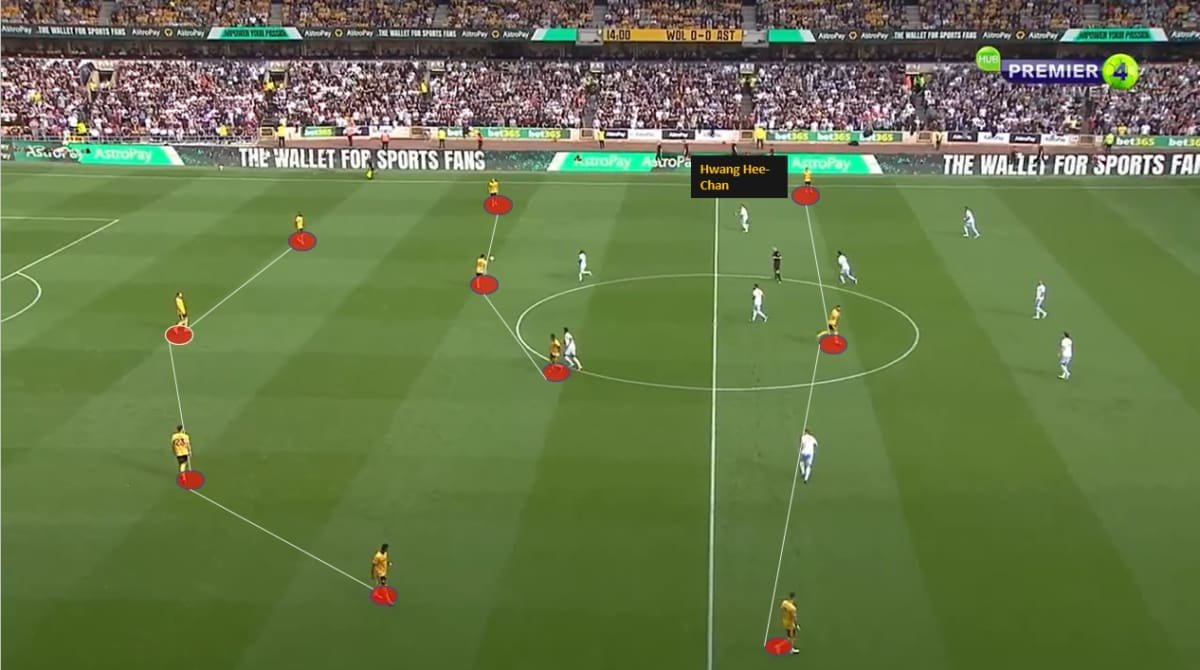
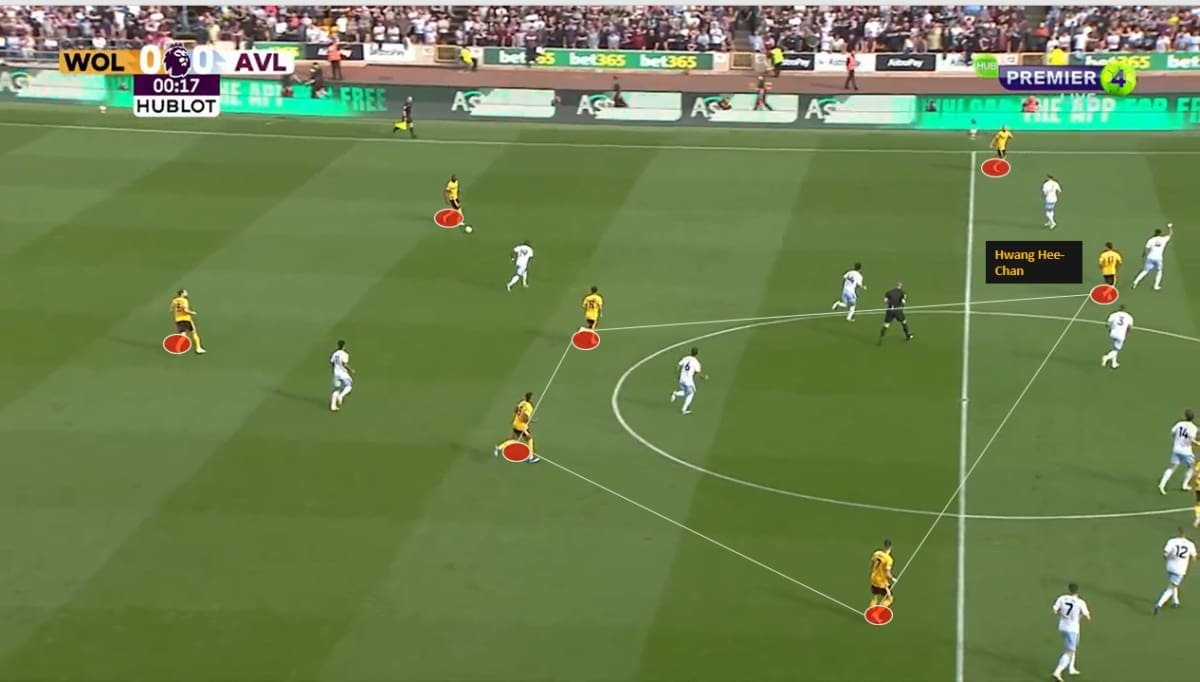
Pics 4, 5 and Vid 2: Hwang’s role as the inside forward and his sync timed runs with Neto and Cunha
The Wolves’ match against Aston Villa serves as an excellent illustration of Hwang’s versatility. In this game, his dual role as the left-wing player and inside forward (as evident in Images 4 and 5) was notably apparent. Once again, he capitalized on his chemistry with Cunha and Neto, aligning with O’Neil’s tactical approach. The strategy was quite straightforward: isolate Neto in a 1v1 situation against the opposing team’s weaker link, which could be either on the left or right flank. Then, during the transition phase, observe his movements, as shown in Video 2, illustrating how he occupies the central zone and expertly navigates between the center-backs to execute a goal-scoring opportunity.
Hwang’s role is of utmost importance in both the 4-2-4 and 4-3-3 formations, as depicted in Picture 4. In these setups, a midfielder has the flexibility to drop to the ball side, assisting with the team’s progression and the advancement of fullbacks. This approach allows Hwang Hee-Chan to maintain a high position during periods of settled possession. Moreover, when Wolves find themselves deep within the opponent’s half, it presents an opportunity for a swifter transition, capitalizing on Neto’s ability to execute quick changes of direction and Cunha’s skill in drawing away defenders. Hwang’s innate talent for finishing plays is the crowning jewel that perfectly complements the team’s attacking strategy.
What more can Wolves fans look forward to from Hwang??
With 5 goals already, Hwang Hee-Chan might be the most efficient goalscorer Wolves have found since the days of Raul Jiminez (now with Fulham) who led the team as the primary threat but Hwang perhaps will provide more of a functional forward role alongside 2 other functional forwards like Cunha and Neto.
The mention of Cunha and Neto coming often is a testament to the fact that Hwang’s ability to finish is what brings Pedro Neto’s and Cunha’s game to light even better than the previous years (even when Hwang Hee-Chan was there) and that’s down to O Neil able to profile his players well.
With projections saying he will hit the upper limit of the double digits marks in the Premier League this season, Hwang’s season will be one to watch for all fans.



